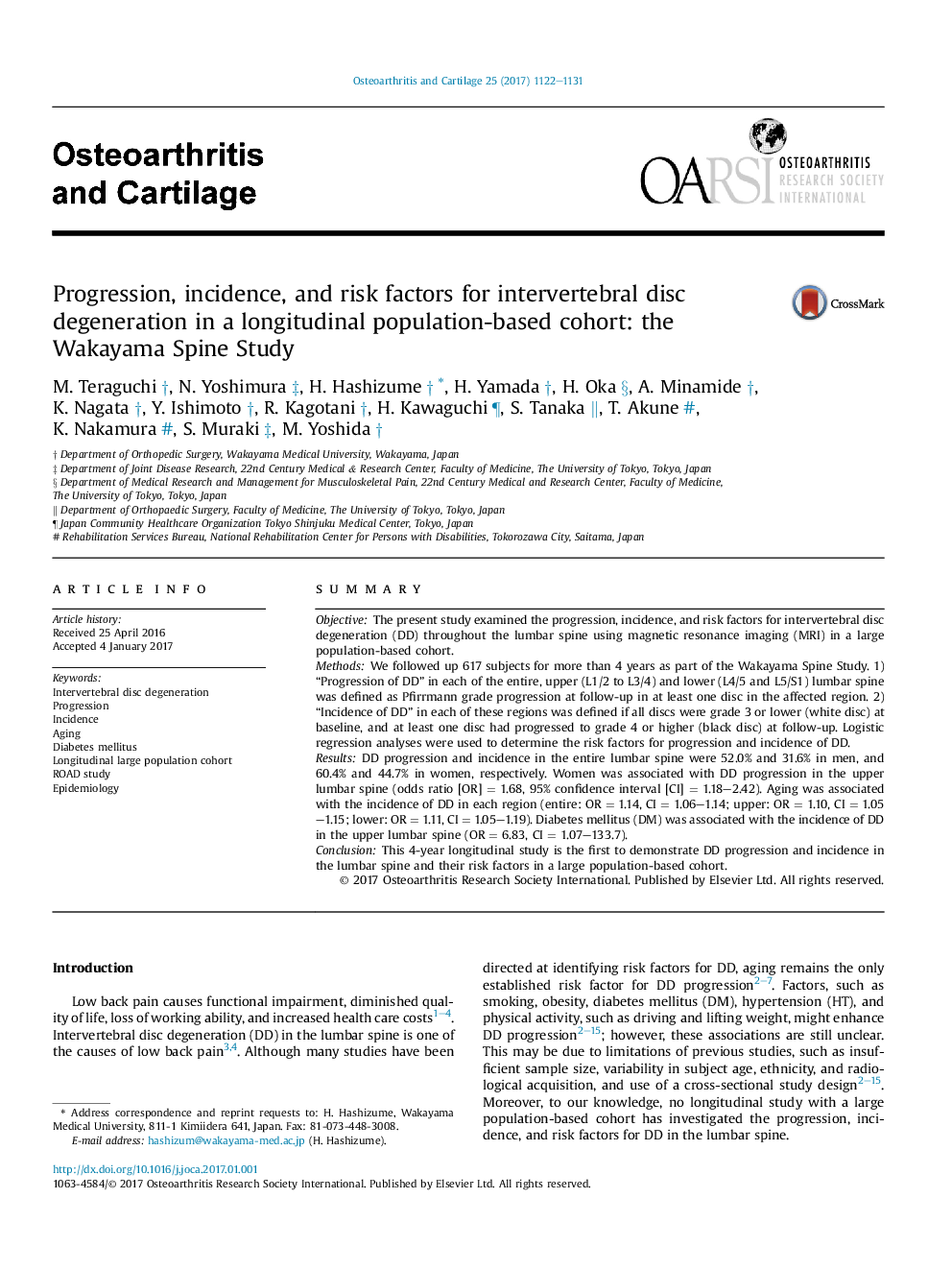| Article ID | Journal | Published Year | Pages | File Type |
|---|---|---|---|---|
| 5669314 | Osteoarthritis and Cartilage | 2017 | 10 Pages |
SummaryObjectiveThe present study examined the progression, incidence, and risk factors for intervertebral disc degeneration (DD) throughout the lumbar spine using magnetic resonance imaging (MRI) in a large population-based cohort.MethodsWe followed up 617 subjects for more than 4 years as part of the Wakayama Spine Study. 1) “Progression of DD” in each of the entire, upper (L1/2 to L3/4) and lower (L4/5 and L5/S1) lumbar spine was defined as Pfirrmann grade progression at follow-up in at least one disc in the affected region. 2) “Incidence of DD” in each of these regions was defined if all discs were grade 3 or lower (white disc) at baseline, and at least one disc had progressed to grade 4 or higher (black disc) at follow-up. Logistic regression analyses were used to determine the risk factors for progression and incidence of DD.ResultsDD progression and incidence in the entire lumbar spine were 52.0% and 31.6% in men, and 60.4% and 44.7% in women, respectively. Women was associated with DD progression in the upper lumbar spine (odds ratio [OR]Â =Â 1.68, 95% confidence interval [CI]Â =Â 1.18-2.42). Aging was associated with the incidence of DD in each region (entire: ORÂ =Â 1.14, CIÂ =Â 1.06-1.14; upper: ORÂ =Â 1.10, CIÂ =Â 1.05-1.15; lower: ORÂ =Â 1.11, CIÂ =Â 1.05-1.19). Diabetes mellitus (DM) was associated with the incidence of DD in the upper lumbar spine (ORÂ =Â 6.83, CIÂ =Â 1.07-133.7).ConclusionThis 4-year longitudinal study is the first to demonstrate DD progression and incidence in the lumbar spine and their risk factors in a large population-based cohort.
